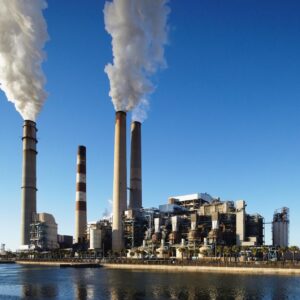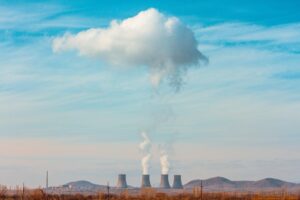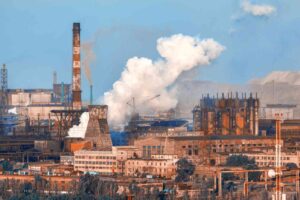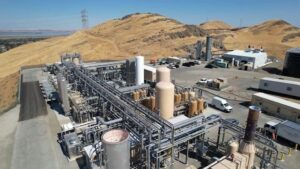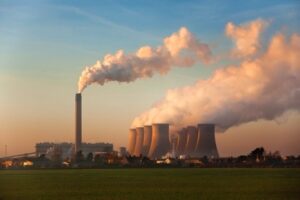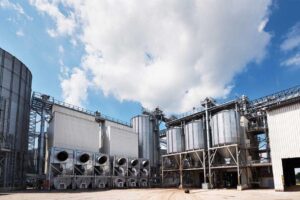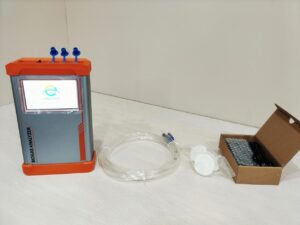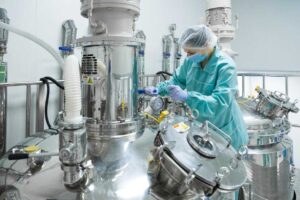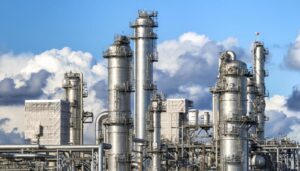Globally climate change has become an urgent issue that requires strong measures to reduce greenhouse gas emissions and achieve carbon neutrality goals. By 2050, as part of a joint effort by countries around the world, we all hope to reach carbon-neutral emissions targets. To achieve this goal, we need to rely on a variety of technologies and tools, among which gas analyzers will play a vital role. This article explores the role of gas analyzers in the 2050 carbon neutral emissions target and how they can help us better understand, monitor and manage greenhouse gas emissions.

Greenhouse Gas Emissions Challenge
Greenhouse gas emissions are one of the main causes of global warming. Greenhouse gases such as carbon dioxide (CO2), methane (CH4), and nitrous oxide (N2O) accumulate in the atmosphere, causing adverse effects such as rising earth surface temperatures, rising sea levels, and frequent extreme weather events. To curb the severe consequences of climate change, the global community has pledged to take action to reduce greenhouse gas emissions to zero and achieve carbon neutrality.
The essence of carbon neutrality is to achieve a balance between carbon emitted and absorbed in the atmosphere, ultimately achieving net zero emissions of greenhouse gases. This concept is at the heart of global efforts to limit climate change, embodied in international agreements such as the Paris Agreement. The EU, under its European Green Deal, aims to achieve climate neutrality by 2050, which involves a variety of strategies including reducing emissions, enhancing natural carbon sinks and implementing carbon offsets.
To achieve this, however, we first need to understand the sources, emissions and distribution of greenhouse gases. This is where gas analyzers come in.
How a Gas Analyzer Works to Face Carbon-Neutral Emissions Target
A gas analyzer is a precision instrument used to detect and measure the concentration of different greenhouse gases in the atmosphere. They can analyze gas components in the air through a variety of techniques, such as infrared absorption spectroscopy, mass spectrometry, and gas chromatography. These instruments are capable of highly accurate measurements of various greenhouse gases, including CO2, CH4, N2O, and more.
Gas analyzers usually consist of the following components:
- Sampling system: A system used to collect sample gases from the atmosphere, ensuring the representativeness and accuracy of the sample.
- Analysis module: Including sensors, spectrometers or mass spectrometers, etc., used to measure the concentration of gas components.
- Data logging and processing unit: Used to store, process and analyze measurement data to generate detailed information about greenhouse gas emissions.
What is the Application of CO2 Measurement?
Measuring CO2 gas involves the use of two main technologies: Tunable Diode Laser Absorption Spectroscopy (TDLAS) and Non-Dispersive Infrared (NDIR).CO2 monitoring is important in order to accurately assess the amount of CO2 emissions produced during different industrial activities.

- Landing fills and agricultural
- Metallurgical industry
- Combustion enginers ,furnaces and boilers
- Vehicles are the three main sources of CO2 emissions.
- Gasification
In the metallurgical industry, monitoring of CO2 emissions can be used to evaluate the efficiency of the smelting process. This can be done by measuring the amount of CO2 generated during the process. In landfills, CO2 is a by-product of landfill gas and the monitoring of this gas can be used to measure the efficiency of the landfill operations. The gas mainly contains CO2 and CH4, and if it is used for combustion or power generation, CO2 can also be used to evaluate the efficiency. In vehicle carbon emissions, CO2 is a major greenhouse gas and monitoring of this emission can effectively measure which types of vehicles produce a large amount of CO2. This can help in developing strategies to reduce the emission of this greenhouse gas and help fight climate change. Overall, CO2 monitoring is an important tool for assessing the amount of CO2 emissions produced during different industrial activities. By measuring and monitoring these emissions, it can help in reducing greenhouse gas emissions and the effects of climate change. By doing this, it can also have a positive effect on the environment.
The Role of Gas Analyzers in Carbon Neutrality Goals
Gas analyzers play a vital role by providing accurate and real-time data on various gas emissions, including carbon dioxide. These devices are critical for monitoring emissions from various sources, such as industrial processes, energy generation and transportation. By accurately measuring emissions, gas analyzers help identify the most important sources of greenhouse gases, making targeted emission reduction strategies possible. They are also important in ensuring compliance with environmental regulations and verifying the effectiveness of emissions reduction initiatives.
also,Gas analyzers play a key role in carbon capture and storage (CCS) technology, these technologies are critical to offset emissions from sectors that are difficult to decarbonize. CCS involves capturing carbon dioxide at the source of emissions and storing it underground to prevent it from entering the atmosphere. Gas analyzers ensure the efficiency and safety of the CCS process by monitoring the capture, transportation and storage of carbon dioxide.

Gas analyzers play a key role in achieving carbon neutrality goals in the following ways:
1. Identification of greenhouse gas emission sources
Gas analyzers can help us determine the source of greenhouse gas emissions. By monitoring gas concentrations in different locations and industries, we can track which areas or activities produce large amounts of greenhouse gases. This helps governments and businesses develop targeted emission reduction measures to reduce emissions.
2. Monitoring and reporting of greenhouse gas emissions
Achieving carbon neutrality goals requires continuous monitoring and reporting of greenhouse gas emissions. Gas analyzers can measure gas concentrations on a real-time or periodic basis and transmit the data to a monitoring system. This timely data enables governments and regulators to track trends in greenhouse gas emissions and ensure compliance with emission reduction commitments.
3. Assessment and verification of emission reduction measures
Gas analyzers can also be used to evaluate and verify the effectiveness of emission reduction measures. By comparing gas concentration data before and after emission reductions, we can determine the actual impact of emission reduction measures and ensure they are effective. This can help improve emissions reduction strategies and make them more efficient.
4. Scientific research and policy development
Gas analyzers provide scientists and policymakers with valuable data to study climate change, predict future trends and develop more effective policies. Data from these instruments are also used to assess the implementation of international climate agreements, such as the Paris Agreement.
The Future of Gas Analyzers
As science and technology continue to advance, gas analyzers will continue to evolve and improve to better meet the needs of carbon neutrality goals. Future gas analyzers may have the following features:

- Higher accuracy and sensitivity: The new generation of gas analyzers will have higher measurement accuracy and sensitivity and be able to detect lower concentrations of greenhouse gases.
- Automation and remote sensing: Gas analyzers may become more automated, allowing real-time monitoring of gas emissions, and even global monitoring through satellite remote sensing technology.
- Data integration and analysis: Future instruments will better integrate and analyze data, provide more insights, and help decision-makers better formulate policies and measures.
- Sustainability and energy efficiency: As the importance of sustainability continues to increase, gas analyzers may become more energy efficient, powered by renewable energy and reduce environmental impact.
Conclusion
Gas analyzers will play a key role in achieving the 2050 carbon-neutral emissions target. They help us identify emission sources, monitor emissions, evaluate the effects of emission reduction measures, and provide important data for scientific research and policy formulation. As technology continues to advance, gas analyzers will become more precise and efficient, providing stronger support for achieving carbon neutrality goals. Therefore, we should continue to invest in and develop this critical technology to ensure that we can effectively address the challenge of climate change and create a more sustainable future. The 2050 carbon neutrality goal can only be achieved by relying on the important tool of gas analyzers to better protect our planet and the future of the next generation.





